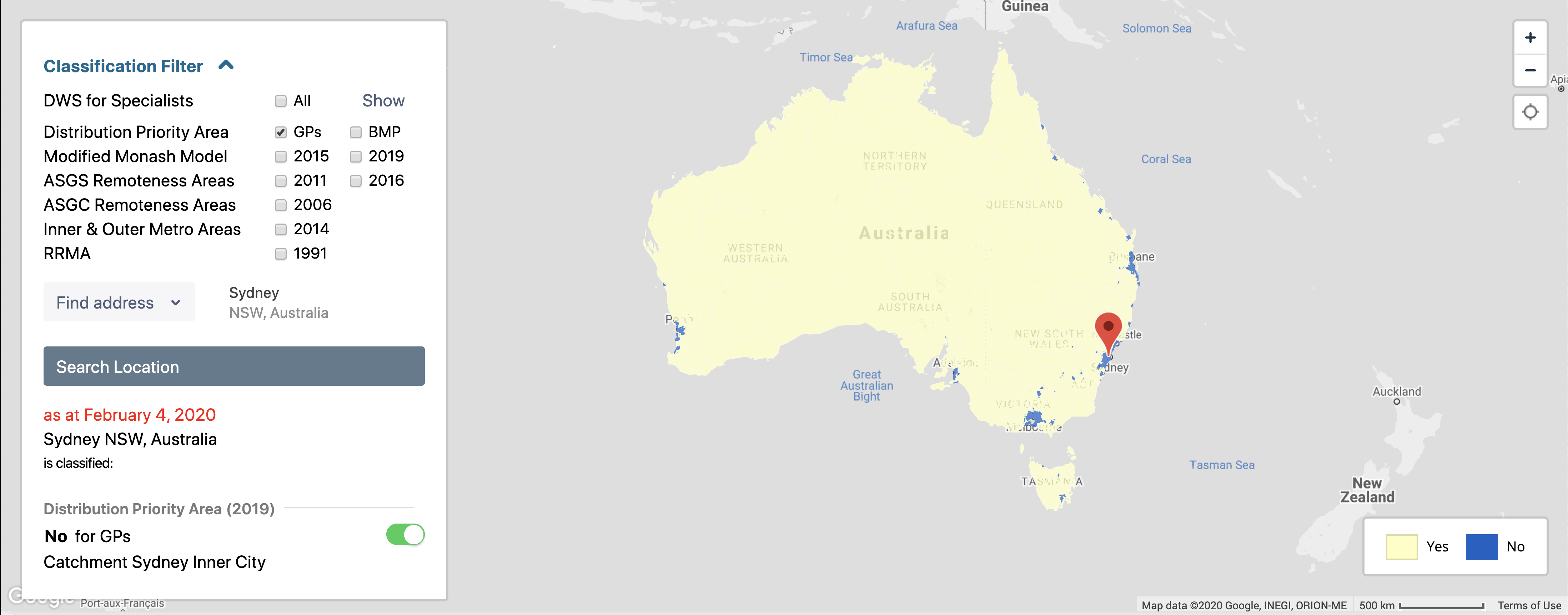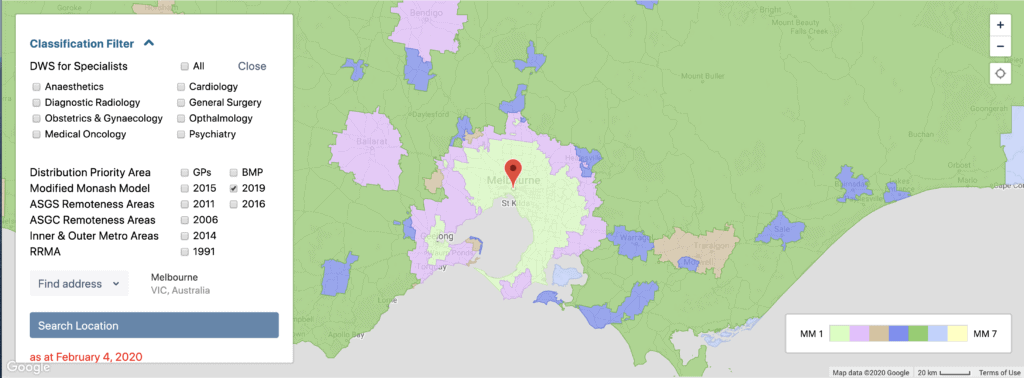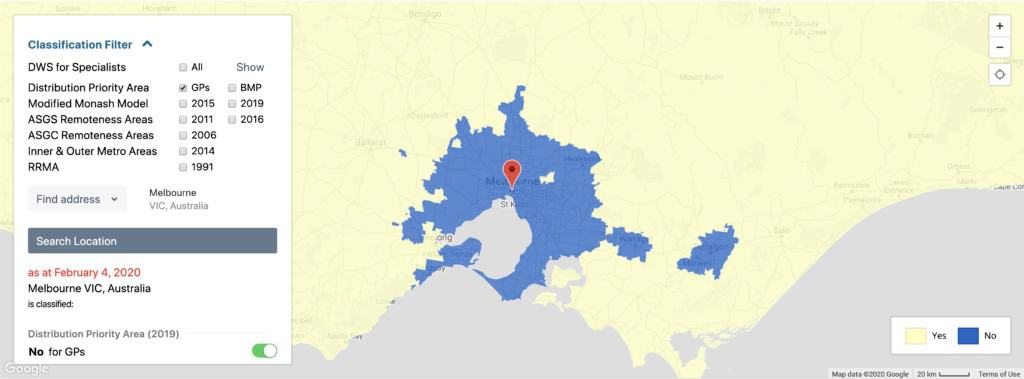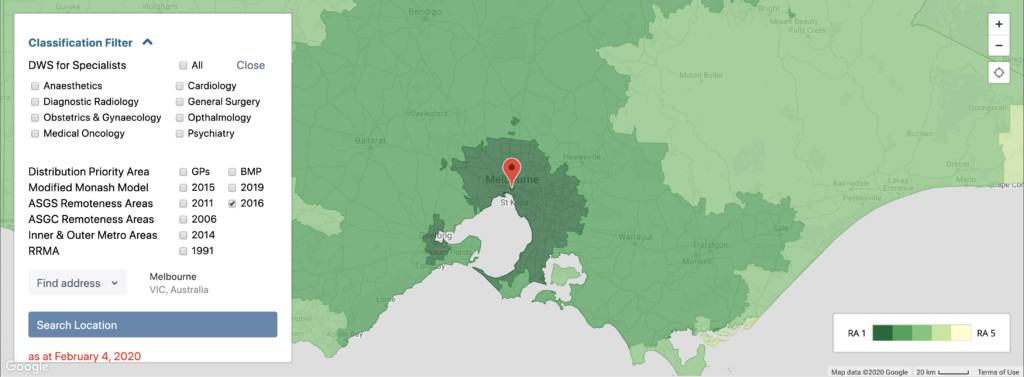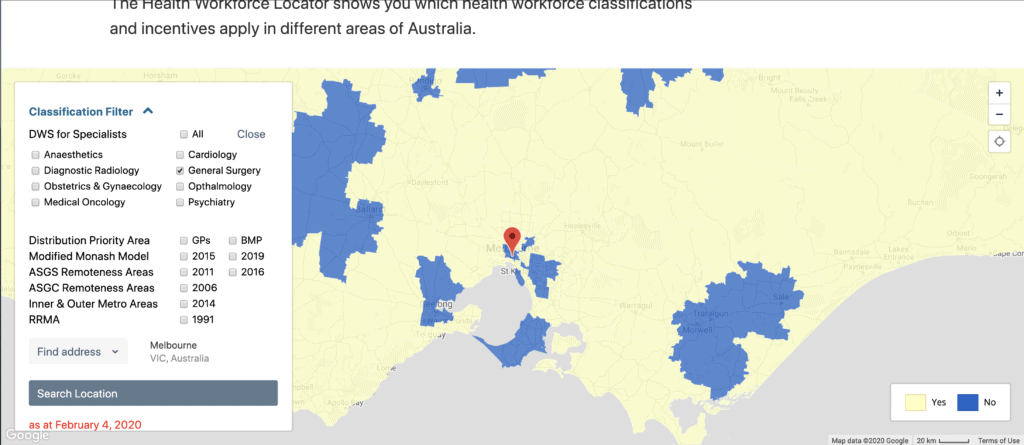Australia is a popular choice for immigration thanks to the high quality of life, prosperous economy and diverse population that is already home to tens of thousands of expatriates from all over the world. It is not surprising therefore that there is lots of interest from doctors from other countries about working as a doctor in Australia. One of the first topics that such doctors often ask about is the migration process. As an experienced registered migration agent with over ten years of experience, I would like to share with you some answers to common questions and queries I get asked about migrating to Australia as a doctor, by doctors like yourself.
In summary, there are two main programs by which doctors can migrate to Australia, the General Migration Stream and Employer-Sponsored Migration. The most common visa currently used for migrating to Australia as a doctor is the 482 Visa. As part of your visa, you will be permitted to bring direct relatives (e.g. your spouse and children) to Australia. The typical range of costs for an individual visa is between $2,600 and $4,000 AUD. For most of the visas used for migrating to Australia as a doctor, there is the possibility to move from a visa to obtaining permanent residency. With the 482 Visa, you can generally apply for permanent residency after 3 years.
Read on to find answers to the top ten questions about migrating to Australia as a doctor.
1. Why Is There So Much Interest in Migrating to Australia as a Doctor?

Australia is a popular choice due to its quality of life and good economy. Another attractive reason for migrating to Australia as a doctor is the reputation of its health care system and the way in which medical practitioners are remunerated. As noted elsewhere on this blog the medical profession dominates the top ten wage earner list according to the ATO.
Australia is also heading for an acute doctor shortage in the coming decade, especially of full-time GPs. By 2030, researchers project a shortfall of 9,298 full-time GPs which is 24.7% of the GP workforce. Opportunities exist in a number of other doctor specialties as well.
There is a particularly high demand in regional areas. Many Aussie medical school graduates are reluctant to practice in rural or isolated low population places. They often do not wish to leave the city and go country or bush. And if they choose to specialize they often stay in city areas for training.
Therefore there is a demand for suitably qualified doctors all over Australia.
2. What Are the Immigration Options Open to Doctors from Other Countries?
Australia’s skilled migration programme offers several temporary and permanent residence visa options to overseas trained doctors who hold qualifications that are equivalent to Australian standards, as well as applicants who have completed their medical training in Australia on a student visa.
Occupations in the medical profession that may be nominated for a skilled visa cover a broad range. Which professions are on the list does change over time. But generally includes a number of medical practitioner types, including (at the time of writing this post) general practitioners, anaesthetists, specialist physicians and surgeons.
There are two main categories for skilled migration to Australia for Doctors:
- The General Migration stream (GMS) which encompasses a range of permanent points-tested visas such as:
- Skilled Independent visa (Subclass 189)
- Skilled Nominated Visa (Subclass 190)
- Skilled work Regional (Provisional) Visa (Subclass 491)
The highest scores under the current test are for occupations in demand requiring specialised training, and then for general degree levels. Points are then awarded on a scale for age, English proficiency and other factors including Australian work or study experience, regional living and study, partner qualifications or state or territory government nomination.
- Employer Sponsored migration which allows employers to nominate/sponsor personnel from overseas to work in Australia in skilled occupations through a number of visa options on a permanent basis. The following categories apply:
- The Employer Nomination Scheme (ENS) (Subclass 186)—allows Australian employers to nominate overseas workers for permanent residence in Australia to fill skilled vacancies in their business.
- The Regional Sponsored Migration Scheme (RSMS) (Subclass 187)— designed to encourage migration to regional and low population growth areas of Australia. Employers in these areas can nominate overseas workers for permanent residence to fill skilled vacancies in their business.
- Temporary Skill Shortage (subclass 482) visa – This visa enables employers to address labour shortages by bringing in skilled workers where employers can’t source an appropriately skilled Australian worker.
3. Which Medical Occupations Qualify for an Australia Skilled Visa?
For migration law purposes, each nominated occupation is defined based on the Australian and New Zealand Standard Classification of Occupations (ANZSCO). The ANZSCO occupational classification system provides a general description of each occupation, skill level, registration and/or licensing requirements and tasks and duties that may be required to be performed as part of each occupation.
As a starting point, we can begin with an overview of the general Medical Practitioners ANZSCO category (referred to as minor group 253). This encapsulates all occupations contained in this grouping.
ANZSCO General Description: Medical practitioners diagnose physical and mental illnesses, disorders and injuries, provide medical care to patients, and prescribe and perform medical and surgical treatments to promote and restore good health.
ANZSCO Skill level: Bachelor degree or higher qualification and one to two years hospital-based training. In some instances, at least five years specialist study and training is also required (ANZSCO Skill Level 1).
The ANZSCO minor group 253 is next broken down into the following unit groups:
- Unit Group 2531 General Practitioners and Resident Medical Officers
- Unit Group 2532 Anaesthetists
- Unit Group 2533 Specialist Physicians
- Unit Group 2534 Psychiatrists
- Unit Group 2535 Surgeons
- Unit Group 2539 Other Medical Practitioners
Note. The ANZSCO Codes do not incorporate every particular specialty of medical practice. If you are unsure which occupation and skill level you fit into you can search on the Australian Bureau of Statistics website or discuss with a registered migration agent.
4. What is the Best Temporary Visa For a Pathway to Permanent Residence in Australia?
The Temporary Skill Shortage (subclass 482) this visa is the most common pathway for migrating to Australia as a doctor and requires that you be sponsored by an Australian medical practice or hospital.
Once the visa application is approved, the employee must work for their sponsor whilst the visa remains in effect. However, there are certain provisions which apply to doctors which allow them to work under a contract arrangement or take on additional work (such as private patients) outside of their normal working hours with their sponsor. There is no age limit for this visa.
Medical practitioners can apply for permanent residency after three years, depending on meeting the age, English, Health and Character requirements. Obtaining permanent residency after age 45 is much more difficult.
Other Visa categories that might be used are 186, 189, 190 and 491 visas.
5. Can I Sponsor My Family When Migrating to Australia as a Doctor?
With Permanent Visas in Australia you can include direct family members in your application when you apply.
The family members you can include are:
- your partner
- your dependent child or stepchild
- your partner’s dependent child or stepchild
- the dependent child or stepchild of your or your partner’s dependent child or stepchild
This means that you are not able to sponsor other members of your family. For example, your parents or brother or sister or grandparents.
6. What Are the Steps for Migrating to Australia as a Doctor Under Subclass 482 Visa?
The TSS 482 visa process is a three-step process:
Step 1: Requires a sponsorship application put forward by the employer (the employer needs to be a lawful, active, operating business and meet local labour and employment practices).
Step 2: The second part of the application process is the nomination application. Again, this is completed by the employer. This form requires that information regarding the position be completed, including salary details, efforts to hire Australian workers and the ‘genuineness’ of the position. The business must also be viable to sponsor from overseas.
Step 3: A visa application by the nominated employee. The visa applicant must demonstrate that they meet the skills required for their occupation as well as health and character requirements. The candidate completes this step.
7. What Are the Steps for Migrating to Australia as a Doctor Under ENS 186?
Step 1: Check if you meet the all the requirements to work in Australia
Step 2: Have Your Employer Lodge their Nomination
Before you can submit an application for the Subclass 186 visa your employer must lodge a nomination for you with the Australian Department of Home Affairs (DHA). You must apply less than six months after the nomination is approved.
Step 3: Prepare Your Documents
The Subclass 186 Visa requires you submit several documents with your application, in order to prove the claims made.
Step 4: Lodge Your Application Online
The Employer Nomination Scheme (Subclass 186) visa requires you to apply online.
Step 5: Wait for a decision
It can take several months for the DHA to make a decision on your visa application, the current wait is 5- 11 months.
Step 6: Receive your visa and start working
Once your application is approved, you will receive your visa and can start or continue working in Australia.
8. What are the Steps for Migrating to Australia as a Doctor Under General Skilled Migration (189, 190 & 491)?
Step 1 – Registration / Skills assessment
Step 2 – Submit an expression of interest with Skill Select, with:
- Skills assessment results
- Your points
- English results
- Select a state/territory
Step 3 – wait for an Invitation from the state/territory
Step 4 – Once invited, gather your documents and with 60 days of invitation
Step 5 – Apply for your visa, 189, 190 or 491
9. What Are the Typical Visa Application Costs When Migrating to Australia as a Doctor?
Visa application costs depend on the Visa you are applying for, for example:
General Skilled Migration (189, 190 & 491) – $4045 Main applicant, additional applicant +18 $2025, additional applicant <18 $1015.
482 Temporary Skills Shortage Visa – $2645 Main Applicant, additional applicant +18 $2645, additional applicant <18 $660.
The Visa application fee’s must be paid by the visa applicant. The employer may at its discretion choose to reimburse you for this cost. Its best to discuss this up front as part of your contract negotiations.
The Employer under a 482 TSS visa will be required to pay a nomination fee for the position ($330) and pay the Skilling Australian Fund Levy. This is $1200 per year if their turnover is less than $10 million and $1800 per year if over $10 million.
10. How Do I Go About Moving from a Temporary Visa to Permanent Residency?
The skilled nominated visa’s 189, 190 are permanent visas once granted.
The skilled regional visa 491 is a temporary visa and the applicant must live in work in the regional area for a period of 3 years before they can apply for permanent residence.
With the 482 TSS visa, the applicant will be on a temporary visa for 3 years and then can apply for permanent residency.
The information provided is general in nature and does not take into account your personal situation. You should consider whether the information is appropriate to your needs, and where appropriate, seek professional advice from a Registered Migration Agent.
Looking for Further Help?
You can book an appointment to talk to a migration agent by following this link
Related Questions.
Should I use a Migration Agent for Assistance?
A Registered migration agent can:
– help you determine what type of visa you need;
– assess your suitability;
– ensure you have included all necessary documentation in your application; and
– save you unnecessary stress.
A Migration agent will provide:
– Trusted legal advice with a peace of mind for your migration journey;
– Prepare, lodge and liaise with the authority on yours and your family’s behalf and;
– Project-manage the application until the visa is granted and bring you to Australia.
Is It Better to Obtain Medical Registration First Before Applying for a Visa?
Answer. If you have a suitable job offer you should be making all efforts to apply for both registration and a visa at the same time. As both processes require significant amount of paperwork and there can be unforeseen delays.
As mentioned prior, you first need to obtain the registration with APHRA and positive skills assessment before you can apply for the Visa.
If you do not have a suitable job offer yet then it is not possible for you to apply for registration or a work visa.
You can still apply for General Skilled Migration and it will be up to the state/territory as to which applicants they send an invitation to apply for a visa. You do not need a job offer at this stage but prefer us usually given to those that do.
How has the COVID-19 Pandemic Affected Visa Applications for Australia?
The Budget announced the program numbers for the 2021-22 Migration Program planning levels will be maintained at the current level of 160,000. Family and skilled stream places will be maintained with a continued focus on onshore visa applications. With respect to skilled visas, priority will be given to highly skilled migrants in the employer-sponsored, business innovation and investor program and global talent program.
